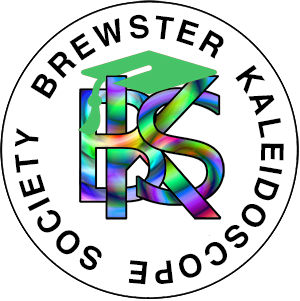Advice for Collectors
from The Kaleidoscoe Collector's Guide by Mary Margaret Gibson
compiled by Mary Theresa Boll

In 2005, Mary Margaret Gibson published The Kaleidoscope Collector’s Guide. In it she included the biographies and history of the work of over 150 kaleidoscope artists, and information about collecting the art form of the kaleidoscope. She contacted artists from around the world and asked them to submit a list of what they had created from the beginning of their careers from their debut kaleidoscope up to the present then 2004. It is sometimes forgotten how young the technical age was at that time. Digital cameras were finally becoming usable and affordable and most folks were becoming proficient at using email. The term kilobyte was common, megabyte was rare and gigabyte yet to be used. Terabytes were still in the future. The iPhone debuted in June of 2007. Mary Margaret asked that the artists send bios, data and photos with everything submitted digitally if possible. Old photos needed to be scanned into digital files. The published book sold for around $70 and was snapped up by collectors immediately. By 2010, only a few were left in the retail market. Mary Margaret’s life moved on to other adventures and causes but her wisdom has still left the kaleidoscope world better off. The following are excerpts from the introduction of her book where she offers the following advice to collectors of kaleidoscopes. Full details may be found in her book published by Profit Power, Inc. The book is sold out and currently out of print.
Mary Margaret Gibson states:
A kaleidoscope is an object of art and science, an instrument for production of optical illusions…the kaleidoscopes and the sculptures that house the instrument have become works of art. (p. 4)
Mary Margaret Gibson’s advice about collecting kaleidoscopes:
Building a Kaleidoscope Collection
First Congratulations! If you are considering collecting, or already collect, contemporary kaleidoscopes you have selected a wonderful mixed media art. The advice below is given for both new and seasoned collectors.
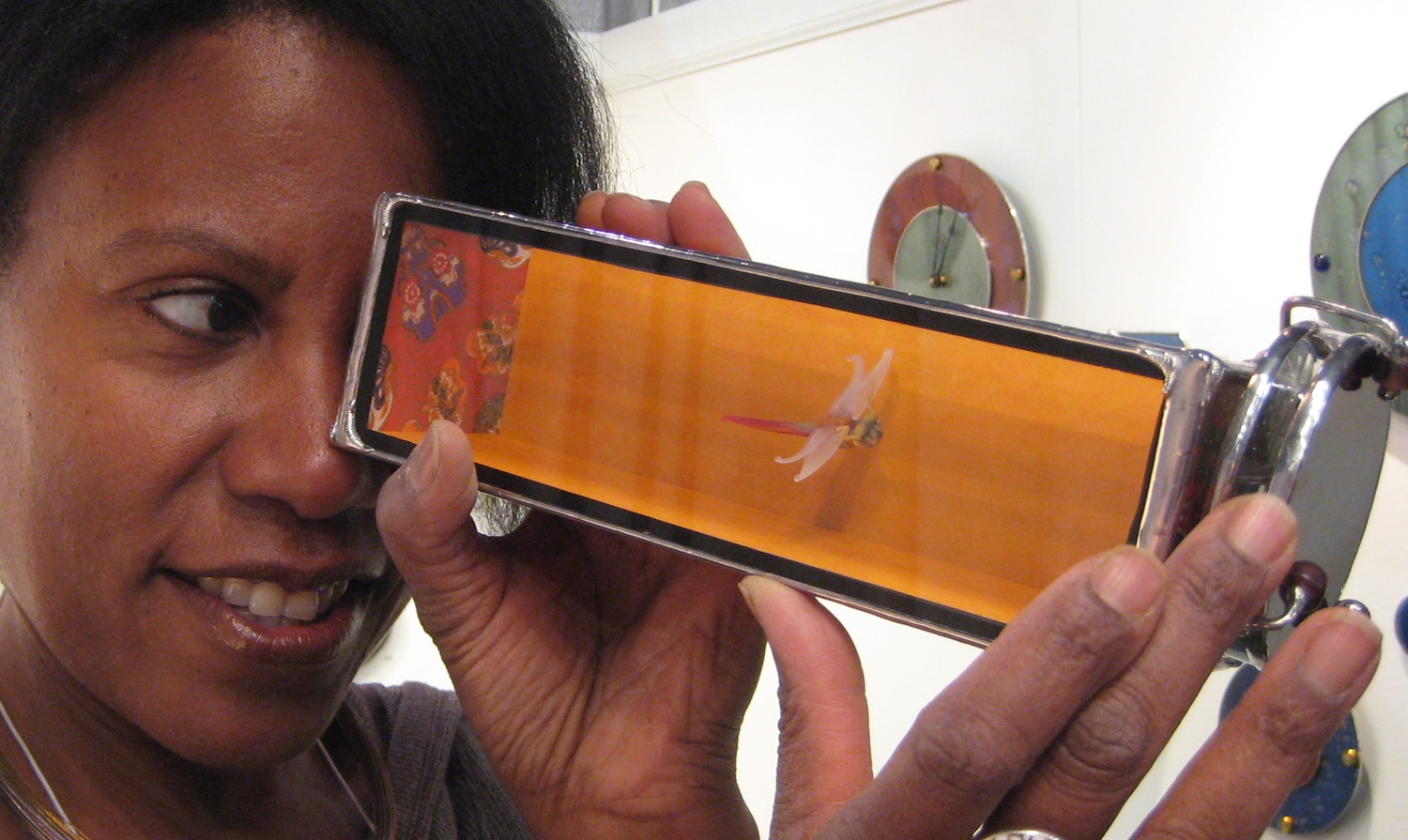
Do you love it?
Our belief is that the primary reason to buy a work of art is that you have had a visceral and emotional connection with the work. This link between yourself and the artist’s work is more important, in the long run, than any notion of status of the artist or inherent monetary value or rarity of the piece – in short, you should buy what you love.
That said, there are other aspects of collecting that should be understood if you want your collection to be not only a joy to you, but to become, or remain, a significant collection over time, or even over generations.
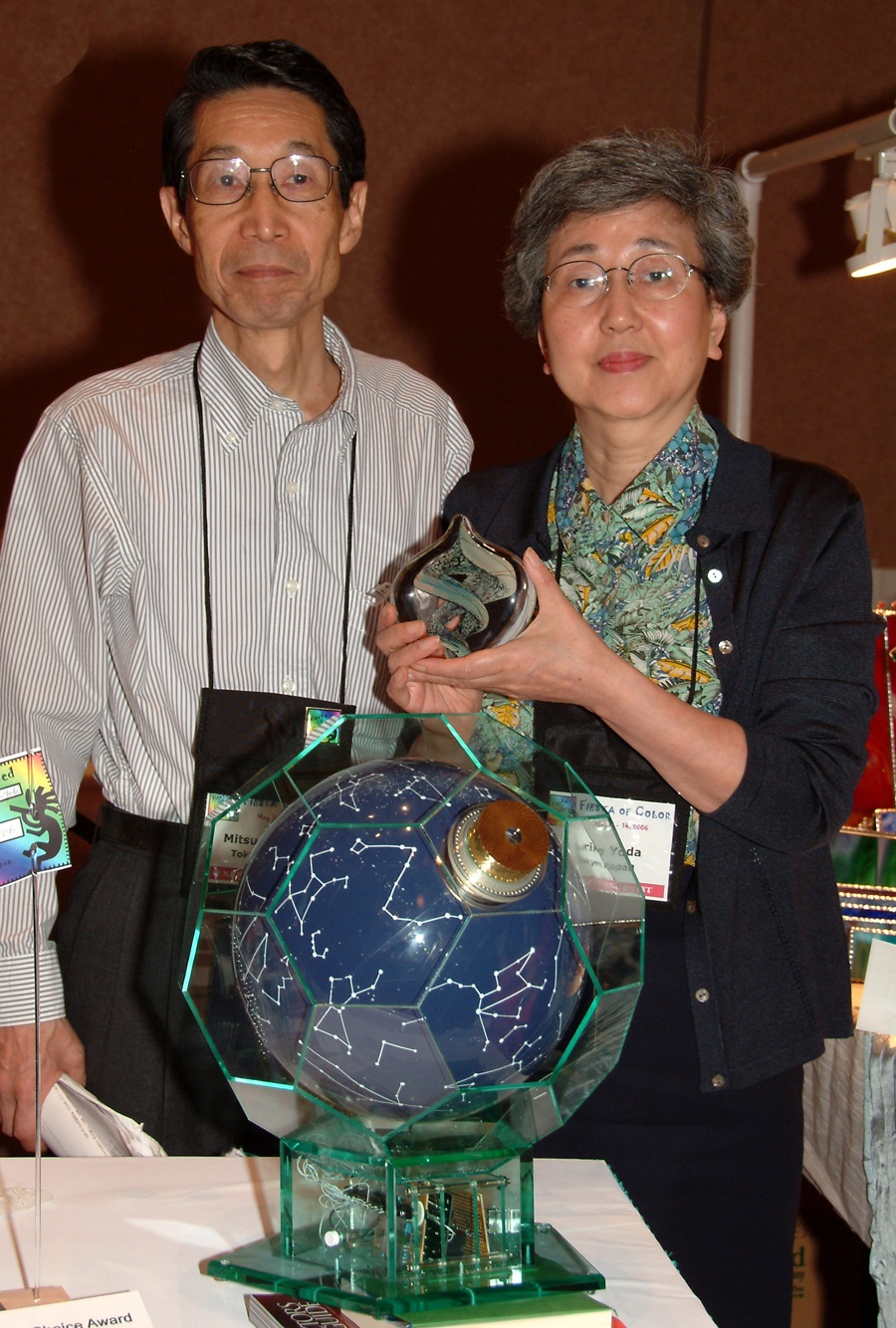
Artist
Here are some questions to ask as you learn about artists in this medium:
- Does the artist have a unique vision or demonstrate some special spiritual or emotional depth? Is this vision compelling to you? Has the vision grown in depth and understanding over time?
- How has the artist been trained? Many kaleidoscope artists have combined several artistic capabilities, such as glass blowing, metal working, wood carving or turning, to create unique pieces. Has your chosen artist been trained in a particular medium? If the artist is “self-trained” had the artist extended their education with classes, workshops, apprenticeships, and work with established artists?
- Has the artist exhibited? If so, where, and what was the result – more exhibitions? Awards? Recognition by peers or experts?
- If the artist is a seasoned artist, are there bodies of work that show progression in form, medium, technique, originality and style? Has the artist moved from one expression of their artistic vision to another as the years have gone by?
- If the artist is an emerging artist in the field of kaleidoscopes, has the artist been known in another field of art? Is the complexity of dual knowledge evident in the kaleidoscopes he or she is making?
- Is the artist popular? If the artist is a student or an emerging artist, or a self-made artist who is becoming more well-known, can you see the originality and passion of the artist in their work? Finding new artists is a great joy – often only passion and originality are the clue to eventual greatness – it’s worth the trouble to look, evaluate, converse and…often…worth the risk of buying that first piece.
There are several variations of Rarity Scale which are used to describe the relative rarity of a work of art or collectible. The universal Rarity Scale, created by Alan Herbert, is well known and adaptations of the rarity scale are typical for specialty markets. (pp. 9-11)

Mary Margaret’s rarity scale included:
- Common – Available from many sources; distributed widely; thousands made
- Available – Obtainable; hundreds made; can be found in many collections, stores and galleries
- Uncommon – More than 25 made
- Scarce – 11-25 made by a contemporary artist; difficult to find outside galleries or stores
- Rare – 6-10 made by an established contemporary artist, or one of an edition produced before 1900 (antique) by a known maker
- Very Rare – 2-5 made by an established contemporary artist or an antique kaleidoscope generally not available outside a museum quality collection
- Unique – One of a kind by a contemporary artist, or an antique kaleidoscope by an unknown maker.
In general, rarity has an upward effect on pricing and, as a result, often creates an anticipated premium to original price when other aspects of value are considered such as the artist’s reputation and condition of the kaleidoscope. (p 11)
Condition of the kaleidoscope was divided into five categories by Mary Margaret.
They were new, mint, excellent, collectible and enjoyable.
- A new kaleidoscope would be one sold for the first time to a collector.
- A piece in mint condition may not be new but would be in pristine condition or like-new.
- A kaleidoscope in excellent condition would show only slight evidence of wear but with the object cell and mirrors in mint condition.
- A kaleidoscope in collectible condition would show some evidence of use but with the mirrors and viewing fields in alignment and fully functional.
- The enjoyable kaleidoscope is one that was much-loved and may show marks or scars and have some interior flaws or parts missing. Its value would not appreciate much.
Value would then depend on its provenance, rarity and value to the purchaser.
Provenance
As in every other field of art, the lineage of ownership of a work of art can add or detract from its value. For example, if the collector from whom the work is purchased is the original purchaser of the work, and the collector is a known collector, it might add value. If a museum of note has he work and sells it, it might add value. Provenance attached to kaleidoscopes, just as it does with other works of art.
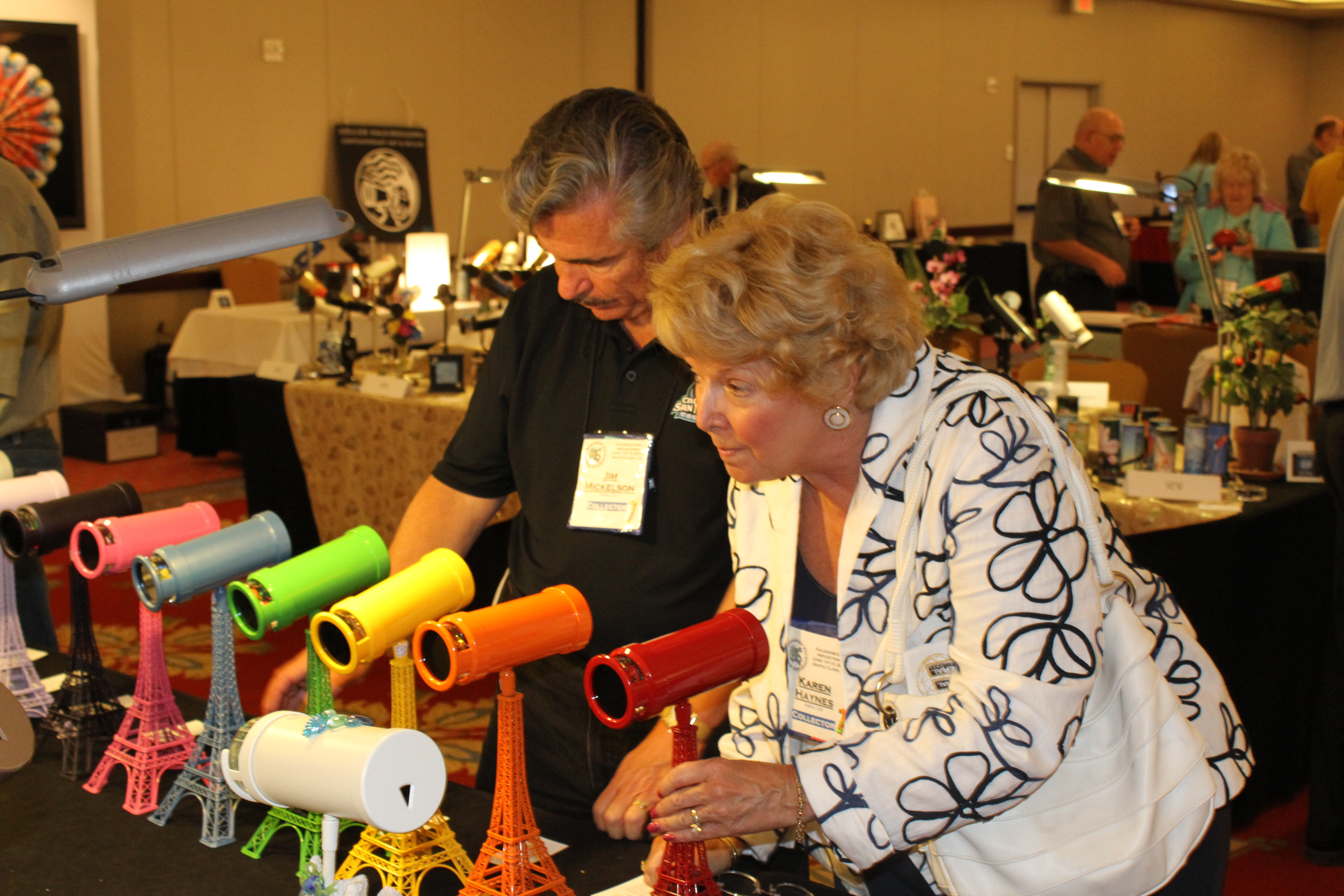
Valuing Kaleidoscopes
Kaleidoscopes may be valued across a number of elements:
- Inflation – the rate of inflation (or deflation) of money from the date of the original purchased to the date of valuation.
- Creativity and Innovativeness – award winning, exhibition history, innovation in technical or creative use of mixed media, innovation in image-making or mirror design or augmentation.
- Condition
- Reputation of the Artist – proven demand for the work of the artist over a period of time, award winning, sold by galleries of singular expertise in kaleidoscopes or other mixed media, invitation to participate in juried shows or exhibitions.
- Technical Quality of the Kaleidoscope – technical aspects of exterior, interior, mirror systems, augmentation to mirrors, ease of viewing, quality of objects, especially handmade objects.
- Provenance
The valuation of mixed media, such as kaleidoscopes is both a science and an art. (pp. 11-12)
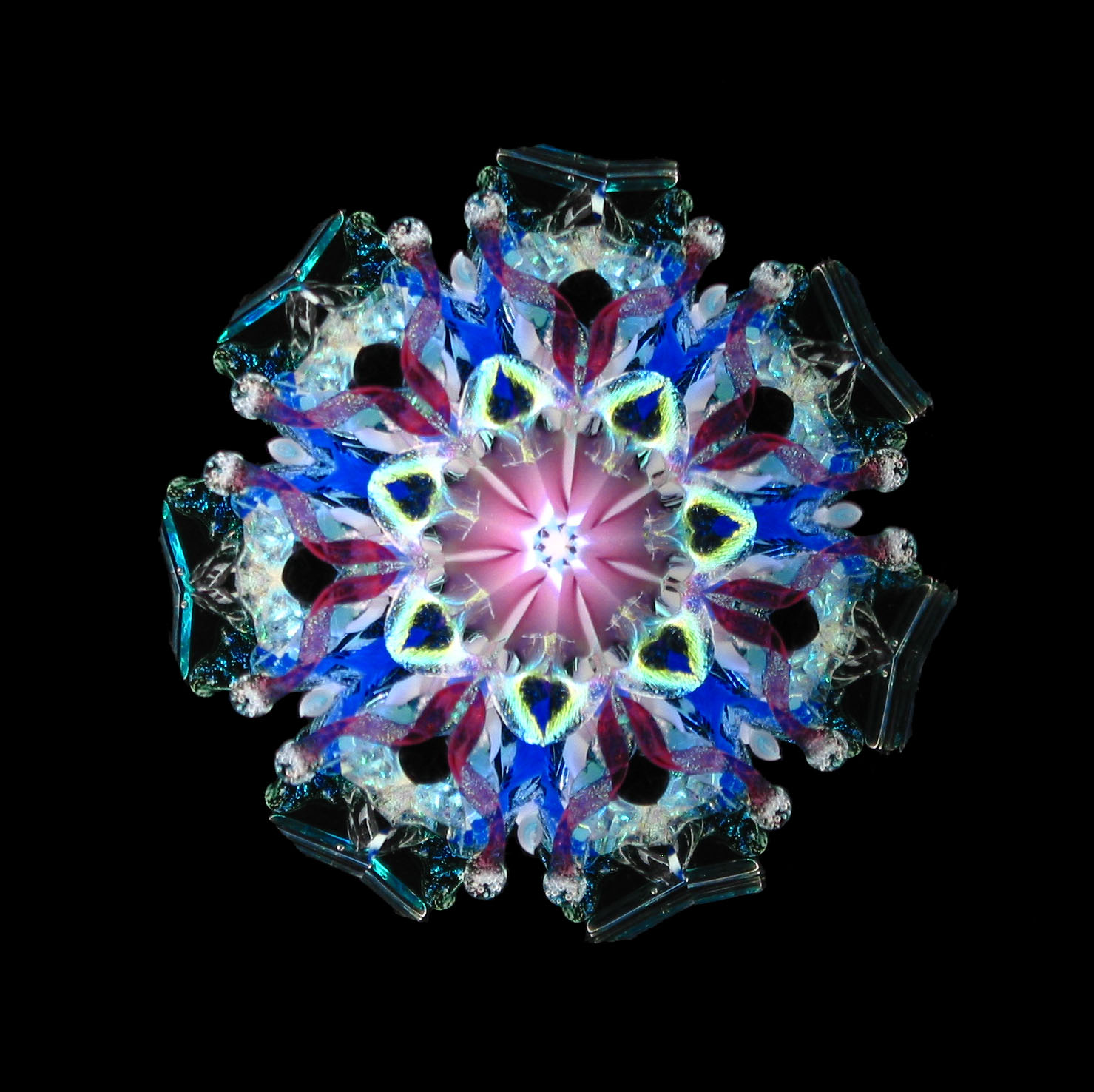
A decade has passed since the publication of Mary Margaret’s book in 2005 and the writing of this article in 2015. Many artists, collectors and retailers have both entered and left the field of kaleidoscopes. Technology has had it influence and several attempts have been made to create on-line records of the kaleidoscope world. Please consider contributing to the BKS Kaleidoscope Library Collection and help us continue to document this wonderful art form.
